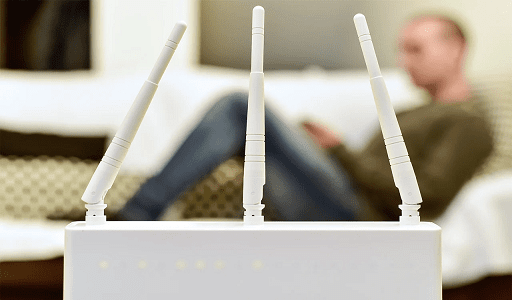How to boost WiFi speed on Windows 11: There is a standard set of configuration options that are available for use with all WiFi network cards for computers, regardless of whether the computer is a desktop or a laptop. These configuration options allow users to alter the behavior of the WiFi network card.
If we run into issues of this nature, we can adjust particularly advanced parameters to make the connection function more effectively, thereby achieving a faster Wi-Fi speed.
These adjustments are contingent on the requirements that we have as well as the difficulties that we are experiencing with them. Because we will be able to expeditiously force WiFi roaming between routers if we have a WiFi Mesh network at home, we will also notice a significant improvement in the quality of the connection.
Today, in this article, we are going to explain all of the available options that we have in an Intel AX210 WiFi card, which is the WiFi card that is most commonly used today in laptops as well as in motherboards for desktop computers.

Detailed analysis of all available configuration settings
Because the advanced settings of our WiFi network card are not located in the main menu of the WiFi, we will need to perform a series of steps in order to access them.
These settings are located in the “Control Panel” section of the WiFi, so we will need to navigate to that section first. control” over the location of all the Ethernet, WiFi, VPN, and other types of virtual adapters. When we have navigated to the appropriate menu, we will have access to very helpful information that will allow us to configure the card in minute detail.
You may also like: 5G Vs. WiFi: Everything You Need to Know
Gain access to the more advanced configuration options.
The first thing that needs to be done in order for us to access the available configuration options is to go to the “Start” section of the computer and search for “Control Panel.” Once we have entered the control panel, we will need to click on the “Network and Sharing Center” section. After that, we will need to navigate to the left side of the page and click on “Change adapter settings.”
Now we can view all of the physical network adapters that we have, including Ethernet and WiFi network adapters, as well as any virtual adapters that we have, such as VirtualBox or VMware, if we have either of those installed.
In addition to that, we will be able to see 4G modems and additional series of adapters, such as virtual private networks (VPNs).
When we reach the menu that contains all of the network cards and virtual adapters, we will need to use the right mouse button to select the WiFi network card that is installed on our computer. After that, we will need to click the “Properties” button to bring up a new configuration menu.
Changes at the logical level, such as configuring IPv4 and IPv6 addressing, are among the alterations that can be made using this menu. There are also other available options. Clicking on the “Configure” button, which is located just below the name of the WiFi card that is already installed on our computer, is what we are interested in doing at this point.
Once we have entered the ” Intel WiFi 6E AX210 Card Properties ” section, we will be able to view all of the advanced options, as well as the driver, the advanced details of the card, the events, and the power management of the wireless network card. This menu is where we need to look at all of the advanced options and decide which settings we want to apply to the program.
Once we have entered the menu, we will be able to view all of the available options as well as the factors that we need to take into consideration.
You may also like: Best WiFi Extender for 2023
The software that controls or drives our WiFi card.
The driver that is currently loaded onto our WiFi network card ought to be the very first thing that we investigate. If we navigate to the “Driver” tab, we will be able to view the date that the driver was last updated.
The date that is displayed here must be relatively recent, as both Intel and other manufacturers typically release new drivers or drivers to solve problems that are discovered by users themselves. Additionally, we need to pay careful attention to the driver version, which is currently set to version 22.160.0.4 in our system.
This is something that we must keep in mind at all times. This driver version is the same as the most recent one that can be downloaded from the official Intel website.
Because the drivers that are already installed in Windows are quite outdated, we are unable to update our drivers by clicking the “Update driver” button. Instead, we need to go to the official website of the company that made our model of WiFi card in order to determine whether or not there is a more recent version available.
It is guaranteed to function correctly when done in this manner, making it the optimal method for updating your drivers. The following are some of the reasons why you should always make sure that you have the most recent drivers installed:
-
The software is updated to include support for newly developed protocols.
If we install the most recent drivers, for instance, WiFi 5 cards that are not compatible with WiFi 6 will be able to “see” and connect to WiFi networks that use 802.11ax frames. This is the case even if the WiFi networks do not support WiFi 6. If we are using an outdated driver, we won’t even be able to detect the presence of our home WiFi network.
-
Corrections are made to fix errors and flaws:
The most important reason why you should always use the most recent version of the drivers is because they fix bugs, which can be either potential security flaws or operational issues.
-
The performance of wireless networks has been improved:
Installing the most recent drivers is important for a number of reasons, one of which is that doing so allows the manufacturer to optimize performance, which in turn allows us to achieve a higher actual speed with our WiFi connection.
-
The “Advanced Options” menu has been updated to include the following additional options:
It is very likely that when we update to the most recent versions of the drivers, we will have additional configuration options available in the “Advanced Options” menu, which we are going to demonstrate to you right now.
If any of these menus do not appear on your computer, it is possible that you do not have the most recent drivers installed on your machine or that the WiFi card you are using does not support the options that are available on the Intel AX210 that we have installed on our laptop. Both of these issues can be remedied by updating your drivers.
We are going to walk you through all of the available choices now that you are aware of how critical it is to always use the most recent version of the drivers or controllers that come packaged with a WiFi card.
You may also like: Google Wifi – Mesh Wifi System Wifi Router Replacement
WiFi card advanced options
Within this configuration menu, we have access to all of the advanced options that are associated with our WiFi network card. In the following section, we will discuss the most important options that are available and what they do with our WiFi card.
In addition, we are going to demonstrate to you how we have it set up to ensure the highest possible wireless performance under any given set of circumstances.
- Roaming aggressiveness: Using this option, we are able to configure the level of aggressiveness of WiFi roaming between different nodes in the network. The “Medium” setting is the one that is used by default. If we notice that our roaming is “slow” because it maintains a connection to the router even though we are physically located closer to the Mesh node, then we need to make sure that this parameter is set to either “High” or “Maximum.” The “High” setting is what we’re using, and the results we’re getting are excellent.
- Channel width for 2.4GHz: By selecting this option, we are able to ensure that our channel width will always be 20 MHz. The standard practice is to keep it set to “Automatic” so that channel widths of up to 40 MHz can be used. This is what we have suggested doing as long as there is no interference with the WiFi networks of nearby businesses or residences.
- Channel width for 5GHz: By selecting this option, you will be able to impose a channel width of 20 MHz in the 5GHz band. We do not recommend that you configure 20MHz because in the 5GHz band, we can typically have channel widths of 80MHz and even up to 160MHz if the router supports it. Because of this, we do not recommend that you configure 20MHz. It is recommended that you keep this option set to “Automatic.”
- Channel Width for 6GHz: This option performs the same function as the one that came before it, but it does so on the 6GHz band. If you want the best possible performance, you should leave it on “Auto” because all WiFi 6E routers and APs have a channel width of 160MHz. This is all the more reason to leave it on “Auto.”
- Preferred band: If the WiFi router or access point that we are using has a band-steering function, then we are able to use this option to give one band more priority than another. If we were using equipment that supported Wi-Fi 6E, however, we would have used that instead of the 5GHz option; normally, however, we use the 6GHz option whenever possible so that we can avoid interference.
- Ultra-high band (6GHz): In order to connect to the 6GHz band without any issues, this option must always be set to the “On” position. The most recent drivers from Intel come with this option already activated by default.
In order to connect to the 6GHz band without experiencing any difficulties, the ultra-high band (6GHz) option must always be set to the “On” position. The most recent drivers from Intel come with this option already activated by default.
You may also like: How To Choose Modern Home Security System
Other configuration choices that can be made here include those listed below; however, we are going to highlight the configuration that is required of you:
- Wakeup Pattern Matching : On
- ARP Offload for WoWLAN:This feature enables you to respond to IPv4 ARP requests even when the computer is turned off. Both the hardware and the driver have to be compatible for it to be able to be activated.
- Download NS for WoWLANL: Same as above but responds to IPv6 Neighbor Request.
- Packet fusion: it allows to save energy by reducing the number of reception interruptions, merging broadcast and multicast packets.
- Boost Process Capability: Enabled
- Wake-up Magic Packet: If the system is powered off when it receives the Magic Packet from a sender, this setting will turn it back on so that it can process the data. We leave it on “enabled” because it is possible to turn it off in the “Power Management” menu at a later time.
- MIMO Power Saving Mode – This setting allows the client to save power by keeping an antenna in an idle receive state. The available settings are:
- Without SMPS : this function is completely deactivated, always having the maximum performance.
- Automatic SMPS – The client decides which SMP mode to use, dynamic or static.
- Dynamic SMPS : keeps only one antenna active. The WiFi AP must send an RTS request to wake up the client, in order to wake up this antenna or idle radios before sending MIMO packets.
- Static SMPS – The client keeps an antenna active, the AP cannot send MIMO packets to the client.
- Wireless mode 802.11a/b/g : allows you to restrict which is the maximum protocol allowed in 2.4GHz. The normal thing is to choose “dual band a/b/g”.
- Wireless mode 802.11n/ac/ax : Allows you to restrict which protocol is allowed in 5GHz. It is normal to choose 802.11ax because it is backwards compatible.
- Not compatible with 40MHz channel : disabled, this influences the width of the 2.4GHz channel. If we leave it activated, only 20MHz of channel width can always be used.
- Transmission power : always at maximum, to have the maximum possible speed and coverage.
- Mixed mode protection : we leave it as default, with the RTS/CTS activated always.
- GTK Rekey for WoWLAN – This is to regenerate the Group Temporary Key (GTK) that is used to encrypt and decrypt WiFi network traffic.
- U-APSD Support – Also known as WMM-Power Save or simply WMM-PS. Allows you to reduce power consumption in latency-sensitive low-traffic modes, such as VoIP. It comes by default deactivated, we have left it activated.
- Sleep on WoWLAN Disconnect : Put the device into sleep mode or cancel the connection when WoWLAN is disconnected.
As you can see, we have access to a wide variety of configuration settings that allow us to fine-tune our WiFi network card to precisely meet our requirements.
Even though it is common practice to leave the default values alone, we do have the option to change some of them in order to tailor the behavior to our preferences. This includes the way in which WiFi roaming, band-steering, and other features behave.
You may also like: Best Home Security Cameras of 2022
Power Management
A very important configuration setting on the network card is called “Power Management,” and we need to change that before we can finish configuring the settings for the network card.
We will be able to configure the WiFi network card in this menu so that the device itself will turn it off in order to save energy. In addition, we will be able to activate the option that allows “this device to reactivate the device” and activate the Magic Packet. Our suggestion is that each of these settings is put into the disabled state.
In the first scenario, the PC might turn off the device if it detects that the battery is getting low; consequently, doing so is not recommended. In the second scenario, it is possible that our computer will turn on even though we do not want it to, which is why we suggest that you deactivate it as well.
One more thing that we need to take into consideration is making sure that when we go into the “Power Options” menu of our operating system, we configure it in such a way that the WiFi network card we want to use always works at 100% of its performance, and that it does not reduce its “power” in an effort to conserve some energy.
It is of the utmost significance that you carry out this action across all power plans (economizer, normal, and high performance), as it will ensure that the WiFi network operates at its optimum level of speed and power at all times.
Would you like to read more about How to boost WiFi speed on Windows 11-related articles? If so, we invite you to take a look at our other tech topics before you leave!










